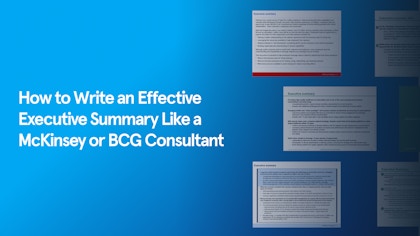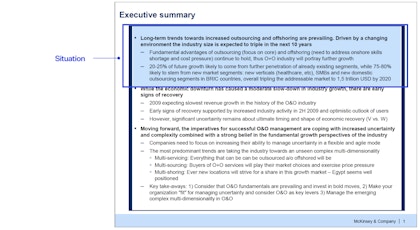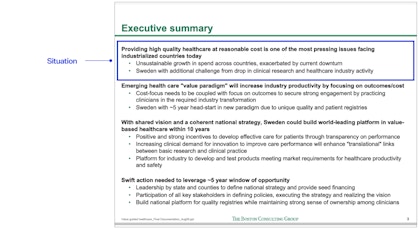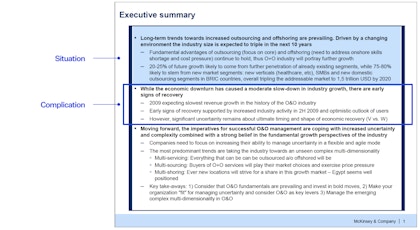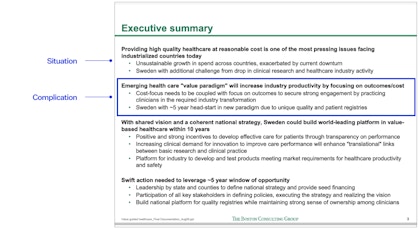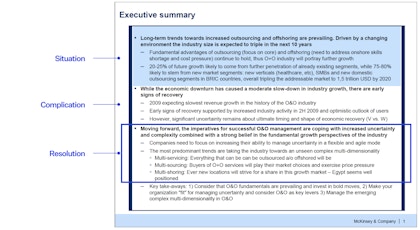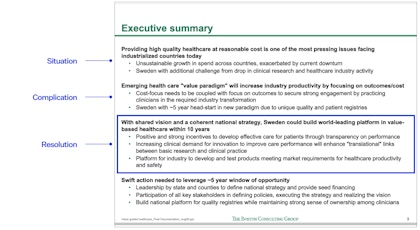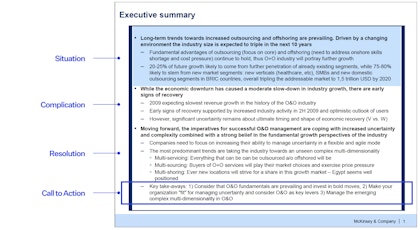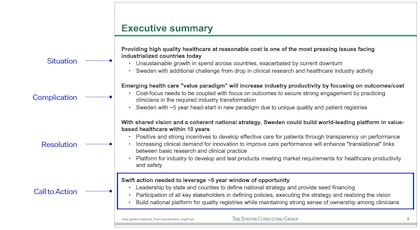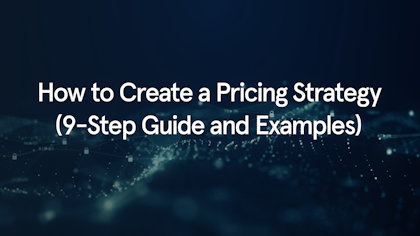Cheat sheet
What is an executive summary exactly?
A short summary of the key messages and conclusions in a longer presentation, focused on actionable solutions or recommendations. In McKinsey and BCG consulting presentations the executive summary is typically one or two slides, but sometimes executive summary can also refer to a short deck.
What does an executive summary include and how do I write one?
See our 'How to' guide in this post.
Does an executive summary come before or after the table of contents?
Typically before the table of contents, as the first (or one of the first) slides after a title page.
Is there a good executive summary slide example?
Yes, you can download some examples from McKinsey and BCG here. You can also see full presentations from BCG and McKinsey here and here.
Or take a look at our full Business Strategy template or our Business Case template for real-life client examples.
Should I include visuals?
Generally McKinsey and BCG executive summaries do not include visuals, except perhaps icons to make the summary more visually appealing.
What is the difference between an executive summary slide and a key takeaways slide?
An executive summary slide, a recommendations slide, and a key takeaways slide are all part of a trio of slides centered around conveying main messages. Typically, an executive summary slide contains the most important points of the entire project/presentation while a key takeaways slide is often used either at the start or end of sections of the presentation to sum up points, or at the end to sum up the main takeaways before ending in an actionable recommendations slide.







